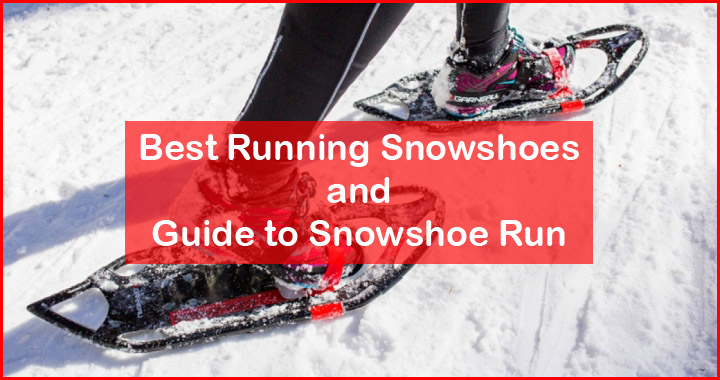
Snowshoes work by distributing your weight over a larger area to help you walk on snow. But you can add the aforementioned tails to extend the length and get more flotation.

Sometimes these snowshoes are called Aerobic or Fitness.
Running snowshoes vs regular snowshoes. Lighter and smaller models allow for speed on groomed trails while a snowshoe with more surface area offers better flotation in deeper snow. Other modern features include comfortable and secure. You should also be prepared for it to feel really hard you can be running at a pace that would normally be considered pretty relaxed on the road but on snowshoes it will feel nothing but relaxed.
In fact it will probably feel more like a tempo run or a race effort depending on the conditions. Ive used my Dion lightweight snowshoes for snowshoe running and races for 10 years. They are the best.
Easy to repairtake into a shoe repair shop for new rivets after 7 years. Have done up to 8 races in a season. They have had lots of use and keep on going.
Have said enough above. They are exceptionally strong snowshoes. While running snowshoes dont offer the same flotation as larger hiking models designed to keep you atop deep powder they are more agile and improve stability and.
Running A small but notable snowshoe subcategory is those built for running. Also known as racing snowshoes a lot of people dont want to quit their favorite pastime when the snow starts to fall and regular winter traction devices can fall short. In terms of build running snowshoes place a premium on lightweight materials often have a.
On snowshoes you can walk straight up much steeper slopes than on splitboards especially if the snow is a little hard. This can be much quicker for a short distance than on a splitboard where you have to zigzag up the slope doing kick turns. Over long distances though splitboards will almost always be quicker and less effort than snowshoes.
Another advantage of splitboards on the way up is that you. Humans have been using snowshoes for thousands of years and for good reason walking through deep snow with only boots on your feet is miserable. Most hikers enjoy three seasons.
Spring summer and fall. When the first big storm of the winter arrives the hiking gear is packed away until next year. Snowshoes allow for a similar experience of the outdoors in the winter season and.
Beyond that snowshoes have a lot of gimmicks. Atlas uses the spring-loaded crampon. Youll still get snow up yer arse.
Tubbs are good on a higher end shoe and are best for easy bindings. MSR plastics are noisy and the add-the-tail feature is bullpucky as well. It doesnt address the resulting shift in your center of gravity with a greater surface area behind you so youre.
You see snowshoes just like regular shoes come in all sorts of different sizes styles uses age ranges gender types and so forth. Just like the saying goes not one-size-fits-all and its the exact same a snowshoes. Granted snowshoes do allow for more forgiveness when size is not exactly correct then your typical running shoes would.
Learn more about snowshoes and how they work in this free winter spor. Snowshoes work by distributing your weight over a larger area to help you walk on snow. In general there are three categories of snowshoes.
Running Hiking and Backcountry. Running-specific snowshoe are light and small and meant for speed. Sometimes these snowshoes are called Aerobic or Fitness.
They closely mimic natural running stride and are not meant for deep powder and backcountry conditions. Hiking snowshoes are geared toward recreational day hikes. Working on the same general principle as skis snowshoes spread your weight over a large flat surface to enable you to travel over the snow without sinking in up to your knees aka post-holing.
Snowshoes have been around for thousands of years in the Old World although Native Americans had the most advanced designs. Their classic design a bent-wood frame with a webbing of rawhide strips was. When running in snowshoes Expect to run 2-5 minutes slower per mile vs.
Most racing snowshoes are 7-8 wide. Most racing snowshoes are 7-8 wide. You can rent snowshoes before you buy to try them out however many stores that rent snowshoes rent the walking type and not the smaller running type.
Generally the heavier you are the larger your snowshoes should be. Aluminum snowshoes can be as long as 36 inches. Composite snowshoes are more compact the 8 by 22-inch size is typical.
But you can add the aforementioned tails to extend the length and get more flotation. The most obvious difference between the Gold 12 Running Snowshoes from Crescent Moon and more traditional snowshoes is the shape. The extreme teardrop shape tapers sharply to a pointed tail end for a narrower base.